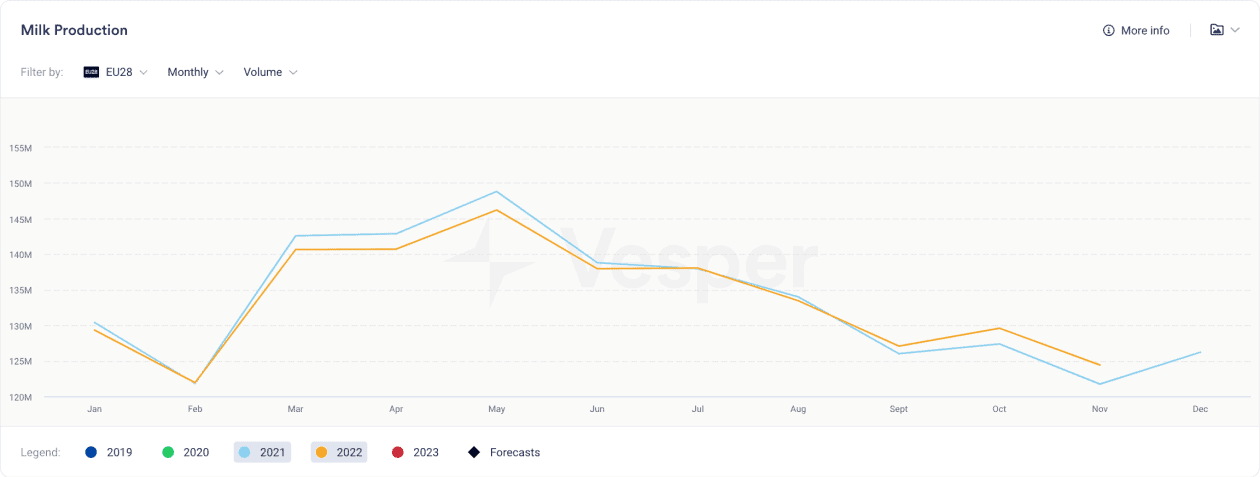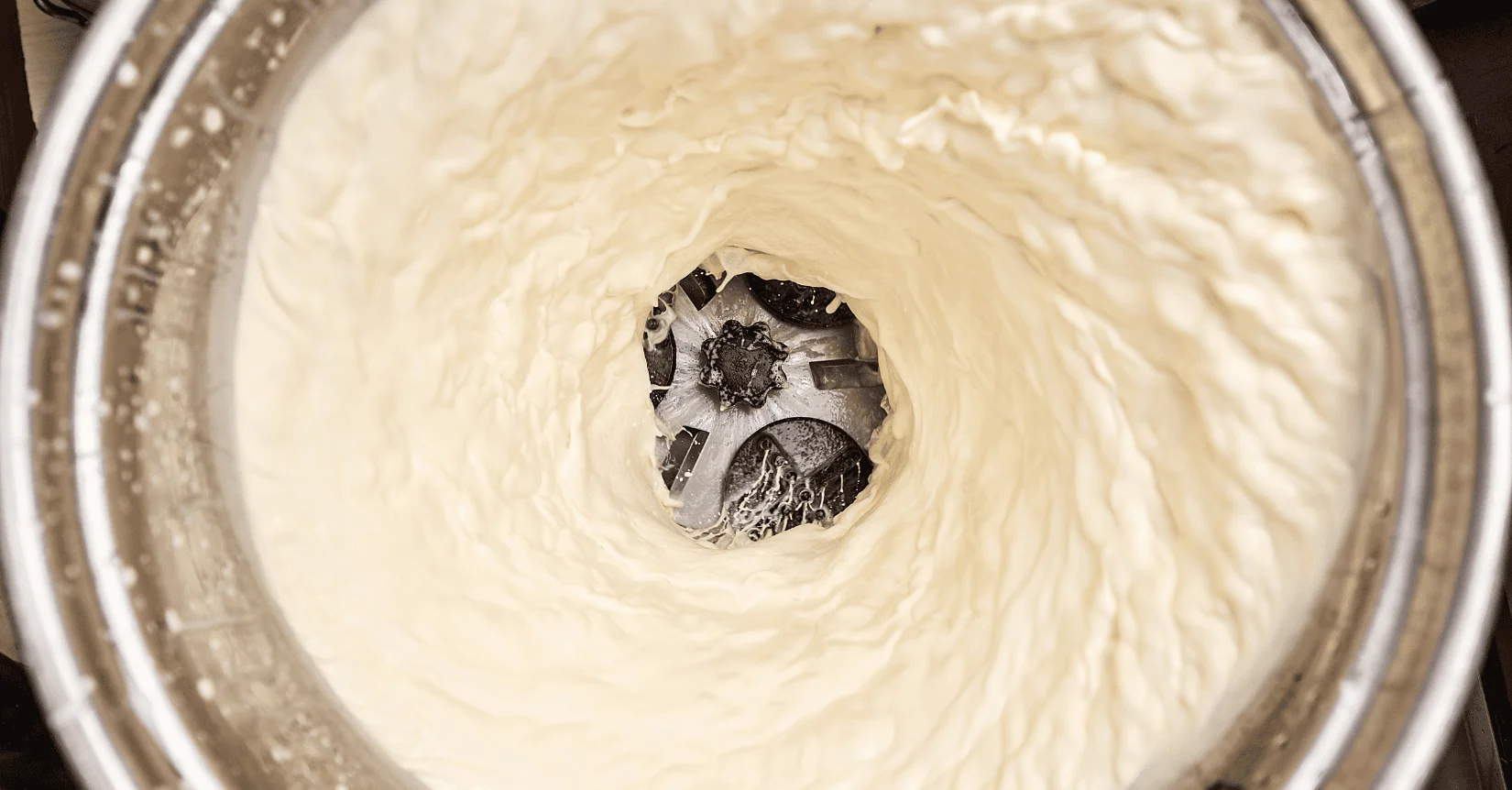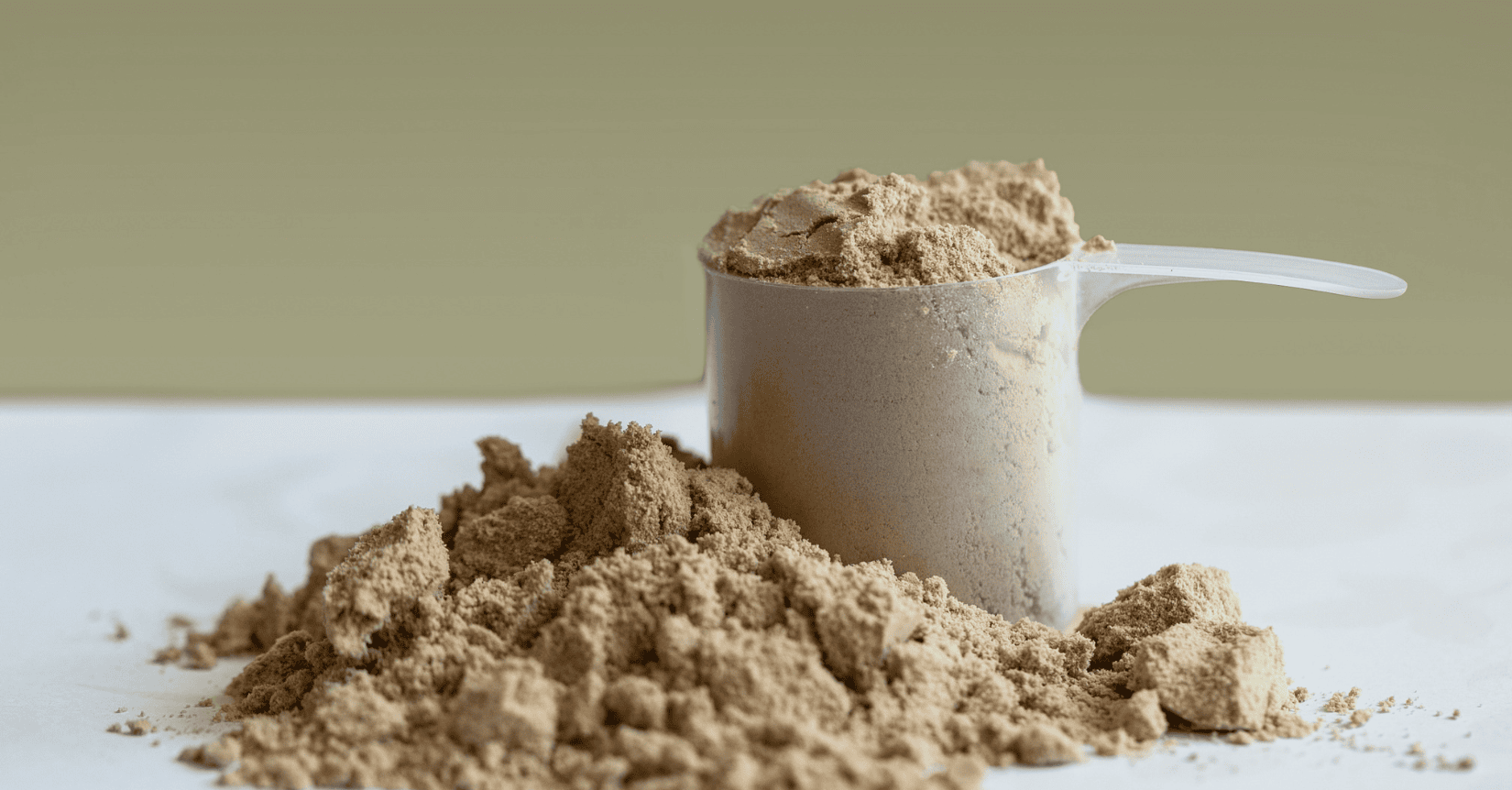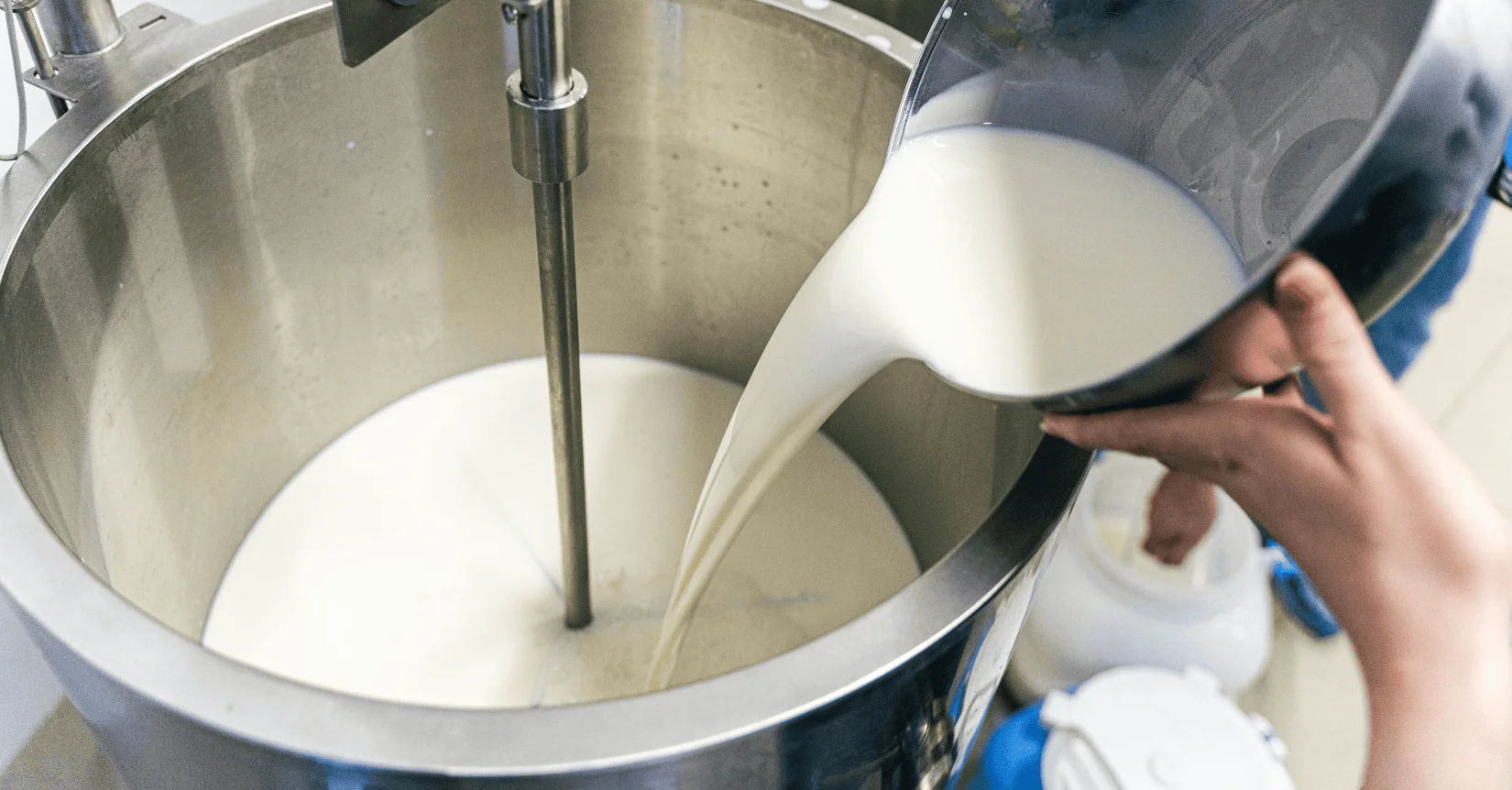In early 2022, milk production was at a deficit compared to the previous year. Weather was unfavorable, feed prices increased, and energy and fuel costs rose to unseen levels. With dairy commodity prices on an upward trend, farm-gate milk prices were raised as an incentive to try and increase milk production again.
The price incentive worked, as milk production increased massively in the second half of 2022. It ultimately exceeded most expectations, as the high farm-gate milk prices created a more than healthy profit margin for dairy farmers.
PS: Check out Vesper’s coverage of Dairy products.

At the start of 2023, the situation on farms has stayed the same. High farm-gate milk prices are still around, and farmers are profiting by maximizing production for as long as possible. On the commodity-producing side, however, the tables have turned. With dairy commodity prices on their return from record heights, the currently very high milk prices create a negative margin for dairy commodity manufacturers.
“The fastest way to improve margins is by cutting costs, which is precisely what big dairy cooperatives throughout Europe will do by reducing their pay-out prices to farmers”, says Jasper Endlich, Market Intelligence Analyst at Vesper. With the peak in milk production around the corner, FrieslandCampina has just announced a €0,04/kg decrease to a farm-gate milk price of €0,56/kg in February, and many cooperatives are expected to follow soon.
Book a demo to discuss the latest dairy commodities prices with one of our experts.
Last, but not least, take a look at our free calculators for the dairy industry.





